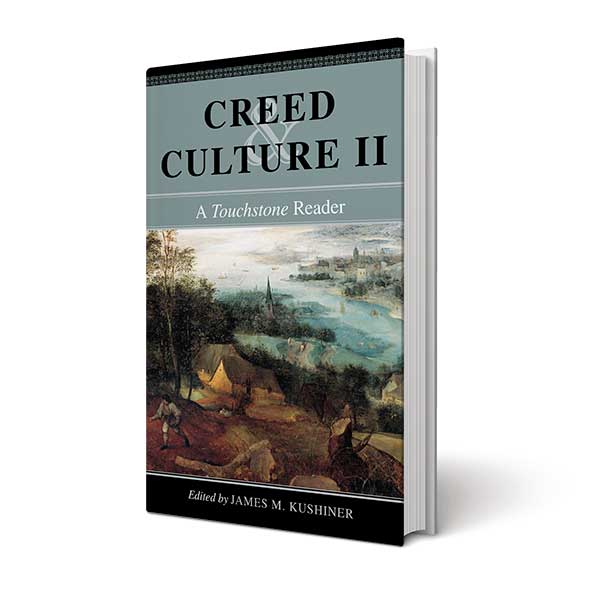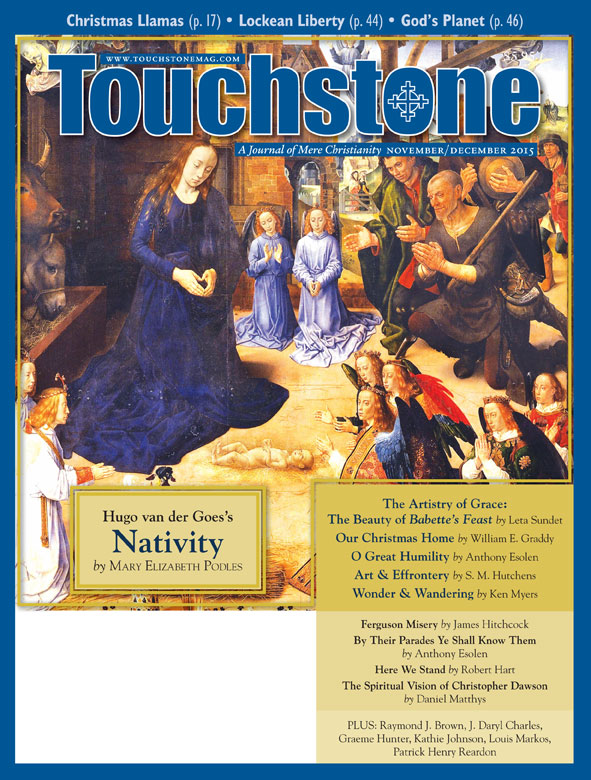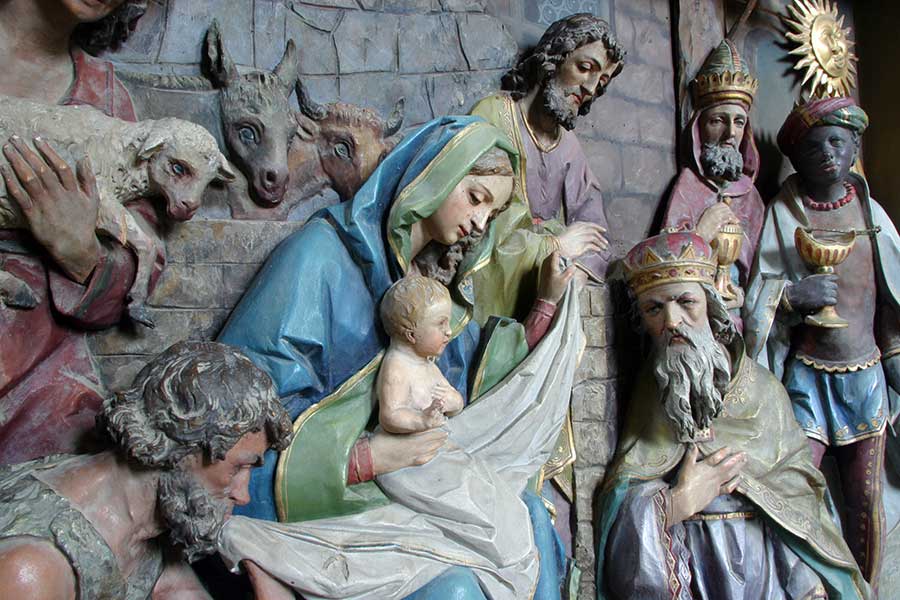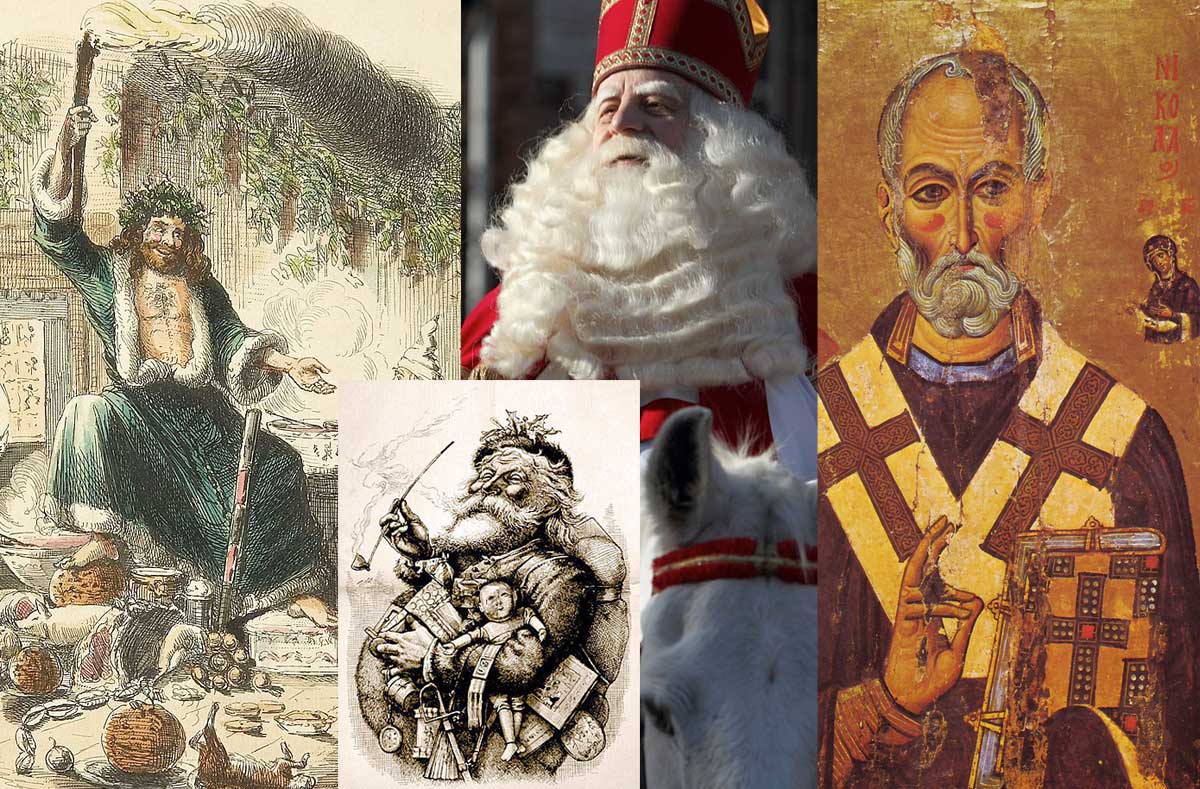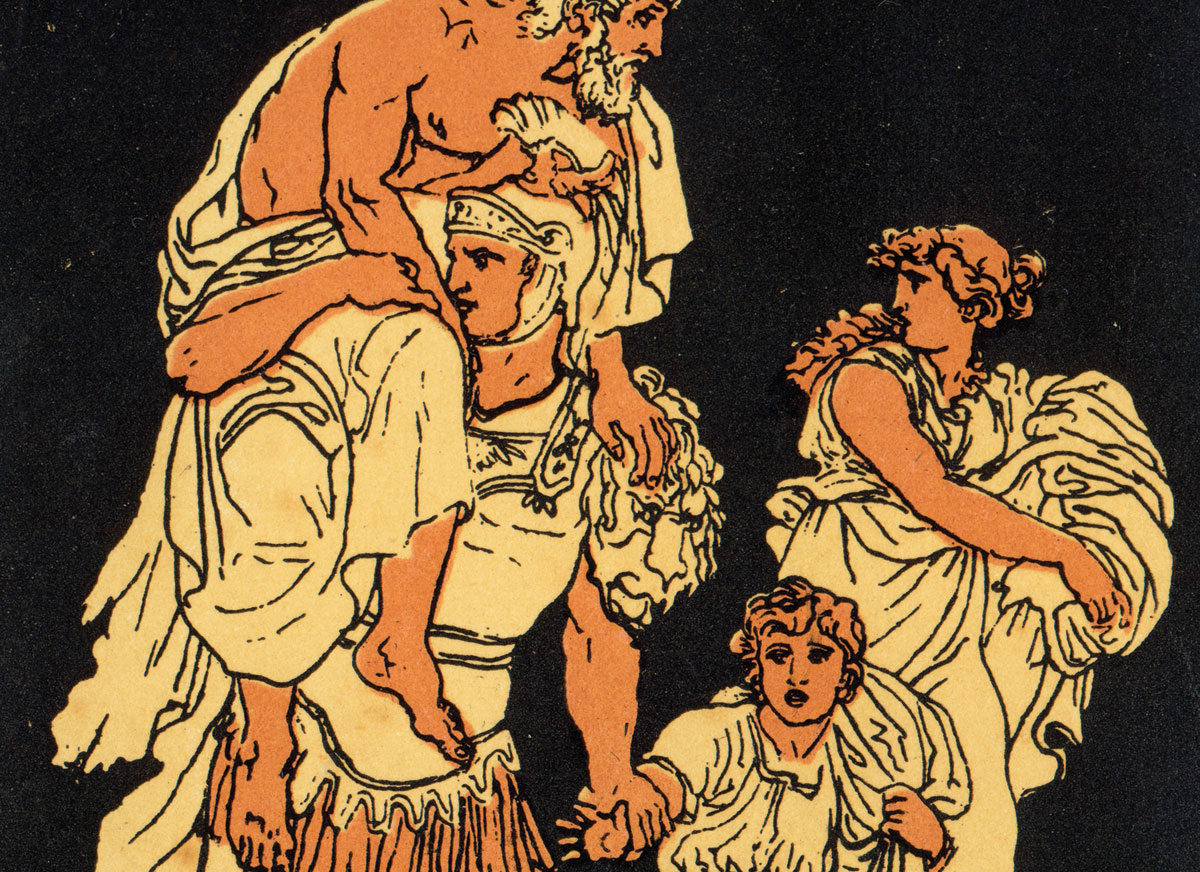View
Our Christmas Home
William E. Graddy on the Deepest Longings of the Restless & the Lonely
It seems that every other store or coffee shop I visited three years ago this December was playing either "Rockin' Around the Christmas Tree" or "I'll Be Home for Christmas." The sock-hoppish cheerfulness of the one was even more glaringly out of key with our national mood that winter than the twilight wistfulness of the other, but the continuing popularity of "I'll Be Home" remains the greater puzzle to me nonetheless. After all, the power of this slow, quiet song lies mostly in the historical moment it captures—the weariness, the dislocation, and perhaps especially the bittersweet hope-against-hope that millions of Americans felt in 1943, when it was released. And awareness of the past, certainly any vital sense of connection with it, has shrunk to the vanishing point in our collective psyche.
At least as strikingly absent is the bond, echoed poignantly in Bing Crosby's song, between the state and the individual, particularly between the civilian and the soldier, that held strong in our grandparents' era. Rosie the Riveter's body may have been stateside, but her heart was in the Pacific, or Europe, or Africa with the troops. Fred or Eddie the GI may have just dodged shrapnel bursts or fought past exhaustion in Anzio, but give either a minute and a scrap of paper, and he'd be writing the folks back home in Ohio. In the waning months of 2012, though, we listened to the same rich but sad voice intone "I'll Be Home" scores of times over in Starbucks or Target, but we sipped our lattes and stroked our smartphones without a flicker of recognition that (a) we were hearing a song about war, and (b) we as a nation were at war—our longest war yet—right then.
The explanations for that profound disconnect are complex, but the two I'd like to posit here, our relentless mobility and its corollary, our radical identification of identity with separateness, resonate in surprising ways with the facts of Jesus' birth, facts that we've grown adept at listening past and are used to hearing spoken in inappropriately smooth voices. For the world our Lord entered over two millennia ago was in important ways as restless, disjointed, and lonely as the world our twenty- and thirty-somethings inhabit now. Recognizing this may help us see, in turn, the depth of Jesus' identification with that world, and, out of this, an authentic hope may spring.
Strangely Nested Journeys
People move, they become travelers, when their mission or their need lies somewhere other than where they are; and, taken together, Matthew's and Luke's nativity accounts give us a strangely nested set of journey narratives: An old priest, Zechariah, stumbles from Jerusalem back to his aged wife, Elizabeth, and to a house that, after decades of childlessness, will in less than a year welcome a baby son. A young and also miraculously pregnant woman, Mary, hurries from Nazareth to Elizabeth's hill-town residence in Judea, where she lodges for three months before returning home. A troubled but obedient carpenter, Joseph, travels as tenderly as poor people could from Nazareth to Bethlehem with Mary, to whom he is now betrothed and whose time of delivery has drawn near. Prompted by angels, ill-smelling and probably illiterate shepherds trudge, empty-handed and curious, from nearby fields toward the manger where Mary's baby lies. Alerted by observation and study, learned astrologers bearing perfume and gold finish their lengthy trek to Bethlehem from the Persian East.
Jew and gentile, pagan and pious, young and old, woman and man, privileged and peasant—no one in this dichotomous cast gets to stay home long, or to return to the world each had formerly taken for granted. No sooner do Mary and Joseph hear the very elderly Simeon and Anna testify that their new Baby will save Israel than they themselves have to flee Israel to save their new Baby, becoming refugees in Egypt to escape Herod's murderous jealousy and fear.
But heaven's Christmas journeys trump all those put together. In both revelation and the popular imagination, angels have wings, so Gabriel's two trips to Palestine and the heavenly host's group flight to Bethlehem may not have been arduous. For God's Son Jesus, though, it was a very different story. His journey would be from a prince's throne to a peasant's crib to a criminal's cross, and only after lying dead three days in a donated tomb would he reenter life, having made provision for the rest of us to live rather than die, and to make our own final journeys into his eternal presence.
The Vast Distance & Its Bridge
In the end, God's journey had to be radical and lonely beyond imagination ("Could you not watch with me one hour?" "My God, my God, why hast thou forsaken me?") because our separation is extreme. Our distance from him, from our best selves, and from each other is vast, and is bridgeable only by Christ's endurance of and triumph over the cross.
Such whisperings may come in the night's quietest or darkest hours, but pride rejects and independence revises them, and we content ourselves with resolutions to be or to do better. So we give our communities hopeful names like "Newtown," and plant excellent homes and schools in them, only to realize that Herod's two-millennia-old Massacre of the Innocents, not to mention countless other slaughters we've denied or forgotten, has been re-enacted yet again.
William Graddy taught literature and writing at Trinity College, Deerfield, Illinois, for 38 years. His work has appeared previously in Touchstone, several other journals, and the Eerdmans’ Handbook to American Church History.
subscription options
Order
Print/Online Subscription
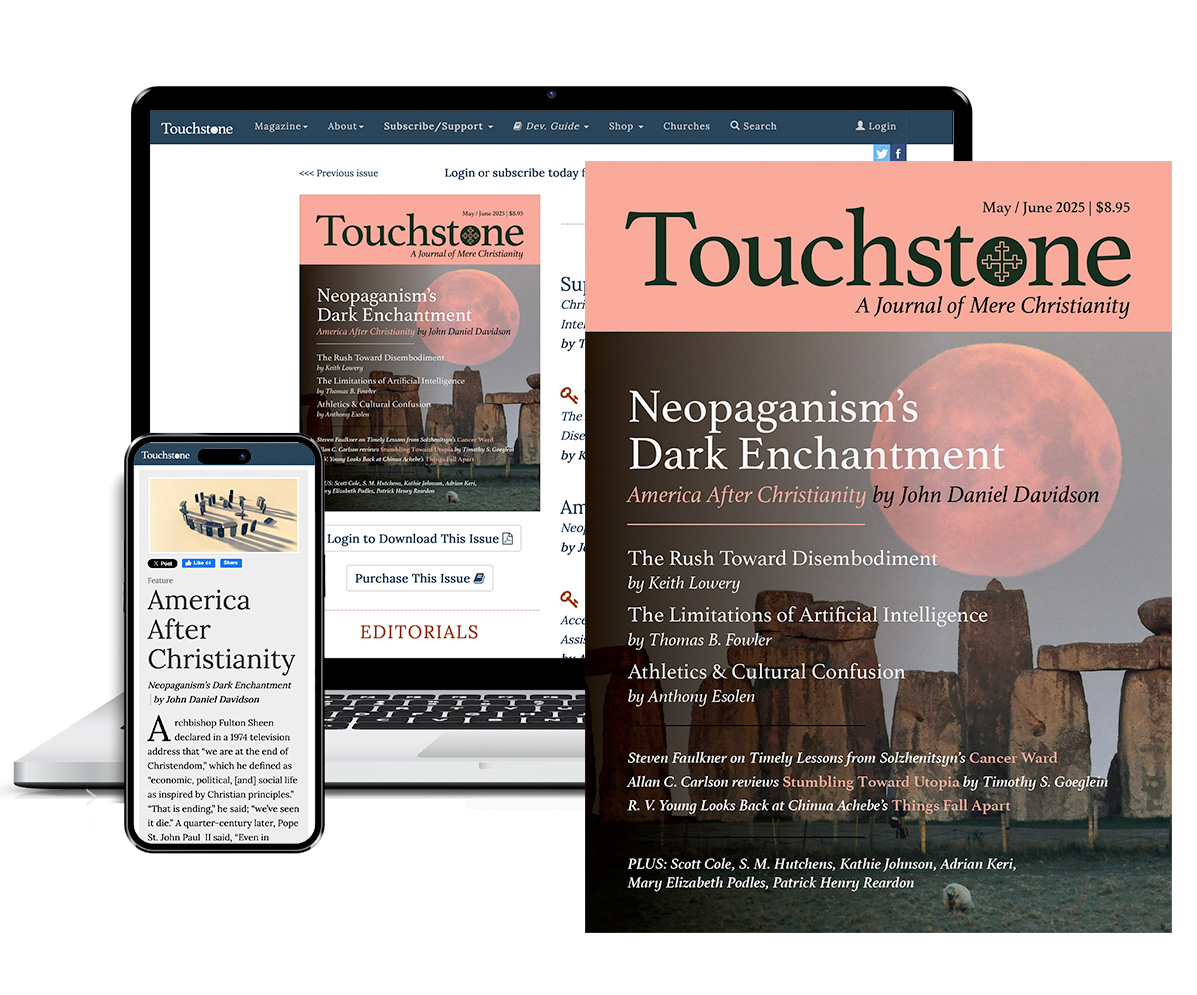
Get six issues (one year) of Touchstone PLUS full online access including pdf downloads for only $39.95. That's only $3.34 per month!
Order
Online Only
Subscription

Get a one-year full-access subscription to the Touchstone online archives for only $19.95. That's only $1.66 per month!
bulk subscriptions
Order Touchstone subscriptions in bulk and save $10 per sub! Each subscription includes 6 issues of Touchstone plus full online access to touchstonemag.com—including archives, videos, and pdf downloads of recent issues for only $29.95 each! Great for churches or study groups.
Transactions will be processed on a secure server.
more on Christmas from the online archives
more from the online archives
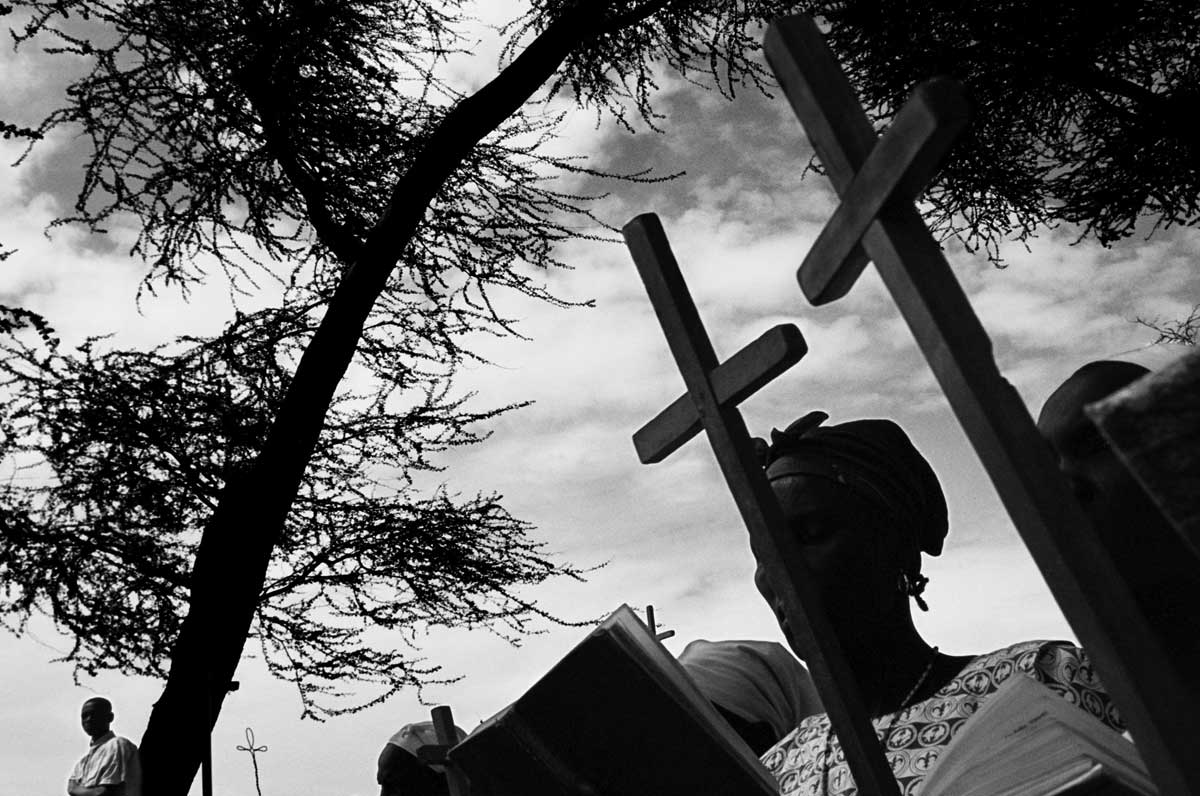
27.3—May/June 2014
Religious Freedom & Why It Matters
Working in the Spirit of John Leland by Robert P. George
calling all readers
Please Donate
"There are magazines worth reading but few worth saving . . . Touchstone is just such a magazine."
—Alice von Hildebrand
"Here we do not concede one square millimeter of territory to falsehood, folly, contemporary sentimentality, or fashion. We speak the truth, and let God be our judge. . . . Touchstone is the one committedly Christian conservative journal."
—Anthony Esolen, Touchstone senior editor




